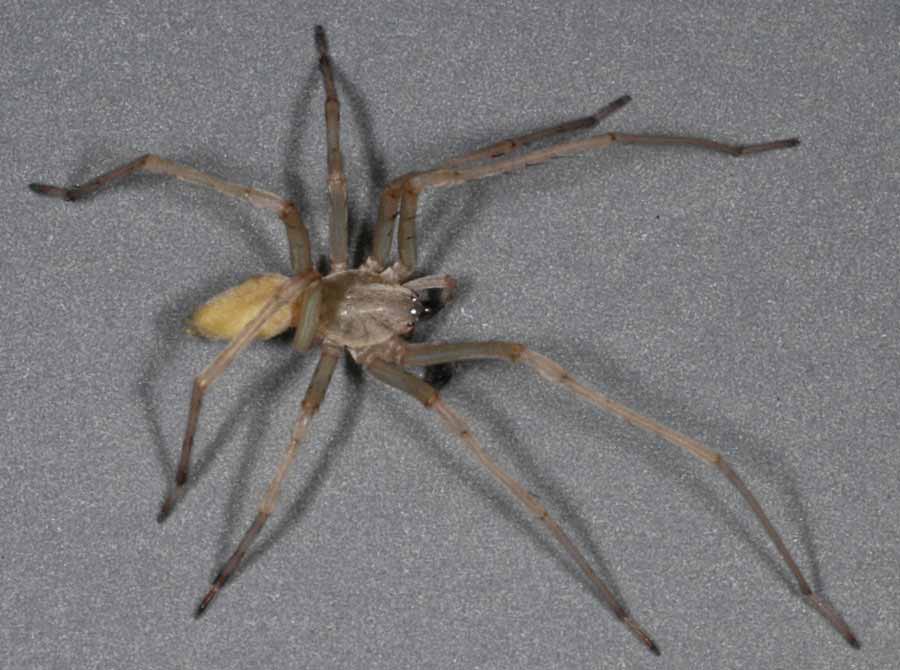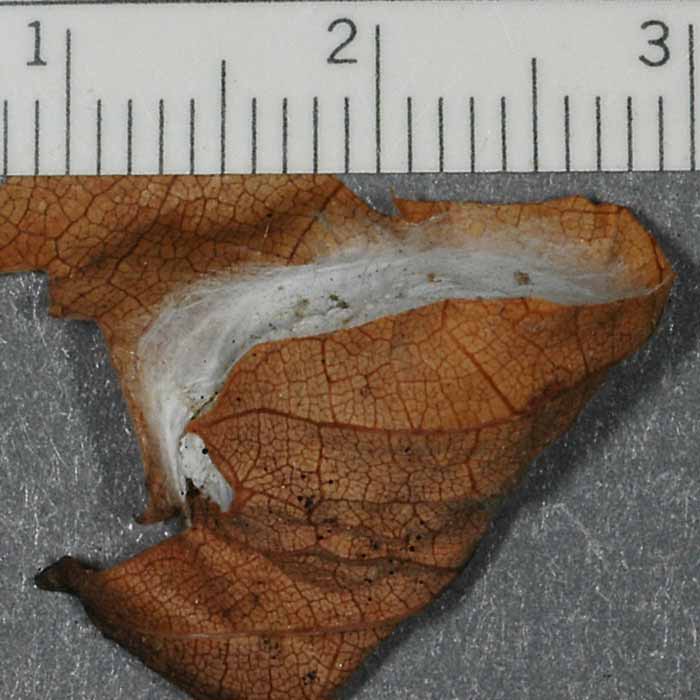Cheiracanthium mildei
|
adult female, live |
|
adult male, live |
|
female genitalia; epigynum |
|
male genitalia; palp, lateral view |
|
male genitalia; palp, ventral view |
|
grape size comparison with adult spiders; male (left), female (right) |
|
spiderling, live |
|
spiderlings, dead; dorsal (left) and ventral (right) |
|
egg sac in rolled leaf |
|
egg sac, exposed |
|
egg sac with scale (cm) |
Current valid name
Cheiracanthium mildei L. Koch (family Miturgidae)
Recognition and diagnostic features
Generic-looking wandering spider, most often dull yellow in color although abdomen can vary depending upon the color of recently eaten prey. Often with darkened tarsi. Identification may be limited to exclusion of other species. Mature males have a very unique and large basally-projecting spur on the palp, a feature very rare in spiders. In C. mildei, there are two small projections whereas in the closely related species C. inclusum, there is only one large projection. In female C. mildei, the genital opening has a horizontal bar midway across the epigynum.
Related or similar species
Cheiracanthium inclusum
Spider
Body lengths when mature: male: 4.1 to 7.6 mm, female: 4.8 to 9.2 mm
Immatures resemble miniature adults.
Egg sac
Description: white silk, variable in shape, takes the shape of the void it fills, female makes a retreat and lays sac inside, female stays with sac to guard it, sac dimensions 15.0 ± 1.8 mm wide by 23.5 ± 8.6 mm long
Number of eggs per sac: 43.0 ± 17.8
Size of egg: 1.06 ± 0.032 mm
Distribution
In California: ubiquitous, most often associated with homes
Elsewhere: throughout most of the continental United States and still expanding its range and habitats
Not native to North America
This species has been transported and become established outside of its range.
Biology
Nocturnal hunting spider. Makes a retreat between two leaves or curls a leaf. This spider was uncommon in North America before the 1950s but has since spread across the continent. It has only recently been found in grapes, where it is becoming very common.
Status in table grapes
Incidence: common
Level of Concern in New Zealand: WPNZ (May 2010) nr, BORIC (DEC 2011) R, MAF-BPRA (2002) nr (coding definition)
Level of Concern in Australia: WPAU (2006) R (coding definition)
Level of Medical importance: minor, bites readily, painful at inception, self-limiting effects
Common name
None for species, yellow sac spiders for genus
Taxonomic history
There may appear to be misspellings of the genus name in the literature. The genus was initially described as Cheiracanthium, but later taxonomists felt that this was an incorrect transformation from Greek to Latin and "corrected" the spelling to Chiracanthium, which was used in publications for many years. However, one cannot change an original spelling unless the name is already assigned to another animal or it was a type-setting error. Hence, Cheiracanthium was reinstated. Also, Cheiracanthium was in the family Clubionidae for decades but was recently transferred to the Miturgidae.
Commonly encountered synonyms
Chiracanthium mildei
Selected references
Cameron, H. D. 2005. An etymological dictionary of North American spider genus names. pp. 274-330, In: Spiders of North America: an identification manual, D. Ubick, P. Paquin, P. E. Cushing, V. Roth (eds). American Arachnological Society.
Edwards, R. J. 1958. The spider subfamily Clubioninae of the United States, Canada and Alaska (Araneae: Clubionidae). Bull. Mus. Comp. Zool. 118: 366-436 + 23 plates
Hogg, B. N., R. G. Gillespie, and K. M. Daane. 2010. Regional patterns in the invasion success of Cheiracanthium spiders (Miturgidae) in vineyard ecosystems. Biol. Invasions 12:2499-2508.
Vetter, R. S., G. K. Isbister, S. P. Bush and L. J. Boutin. 2006. Verified bites by Cheiracanthium spiders in the United States and Australia: where is the necrosis? Amer. J. Trop. Med. Hyg. 74: 1043-1048.












